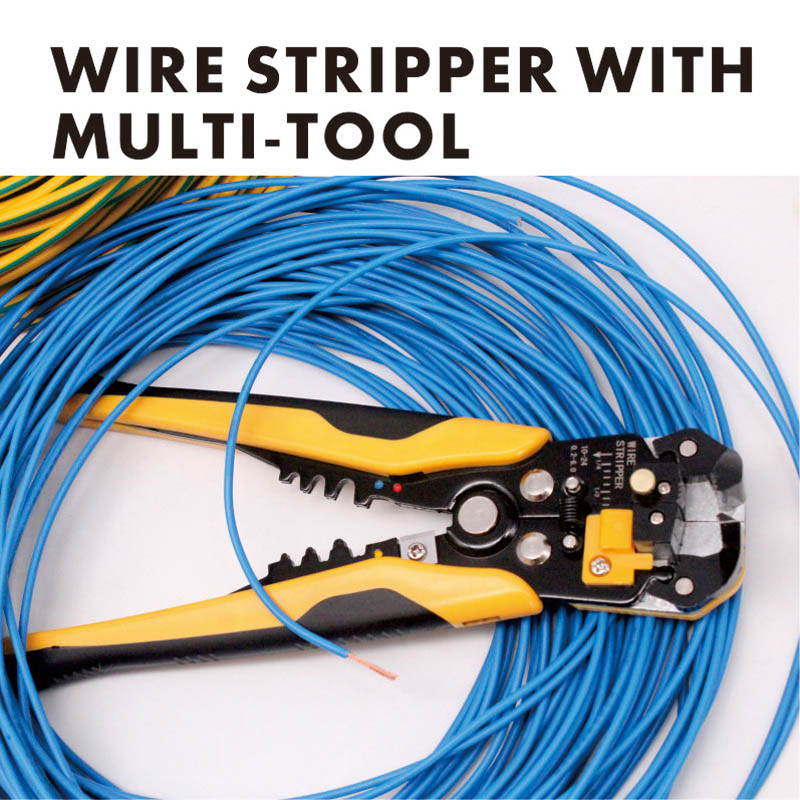Why Are Stripping Tools Essential for Electrical Work?
2024-12-26
When working with electrical systems, whether it's for installation, repair, or maintenance, having the right tools is crucial for ensuring safety and efficiency. One of the most indispensable tools in any electrician's kit is the stripping tool. But why are stripping tools so essential for electrical work? Let’s dive into their importance and explore why every electrician and DIY enthusiast needs one.
1. What Are Stripping Tools?
Stripping tools are designed to remove the insulation from electrical wires, exposing the bare copper or aluminum conductor inside. These tools come in various forms, including manual wire strippers, automatic wire strippers, and rotary cable cutters. They are specifically engineered to safely strip the wire without damaging the underlying conductor, which is essential for making secure electrical connections.
2. Why Are Stripping Tools Crucial for Electrical Safety?
Using the right stripping tool is vital for ensuring electrical safety. Improper stripping methods, such as using a knife or scissors, can easily damage the wire, leading to electrical shorts or faulty connections. Stripping tools are designed to strip insulation evenly and cleanly, minimizing the risk of accidental cuts or nicks to the wire. Proper wire stripping also ensures that wires are securely connected to terminals, which prevents overheating and reduces the risk of electrical fires.
3. How Do Stripping Tools Improve Efficiency in Electrical Work?
Efficiency is key when it comes to electrical work, and stripping tools are designed to make the process quicker and more precise. Some of the benefits they provide include:
- Precise Stripping: Stripping tools allow for accurate removal of insulation, reducing the chances of under-stripping or over-stripping wires.
- Speed: With the right stripper, professionals can quickly strip wires, saving time on large-scale projects.
- Consistency: Consistent stripping ensures that all wires in a system are prepared in the same way, reducing mistakes and simplifying installation.
4. What Types of Stripping Tools Are Available?
There are several different types of stripping tools available, each suited for specific tasks:
- Manual Wire Strippers: These are the most common type, featuring adjustable jaws that allow the user to set the gauge of wire to strip. They work well for smaller jobs and precise wire stripping.
- Automatic Wire Strippers: These tools automatically adjust to the size of the wire and strip the insulation with a squeeze of the handle, making them ideal for high-volume tasks.
- Rotary Cable Cutters: Ideal for larger cables, rotary cutters use a circular blade to cut through the insulation and copper. They are often used for stripping thicker cables like those found in industrial or heavy-duty electrical work.
- Coaxial Cable Strippers: Specifically designed for stripping coaxial cables, these tools remove both the outer insulation and inner shielding without damaging the cable.
- Nose Pliers with Stripping Function: These are multi-purpose pliers with an integrated wire stripper, offering flexibility for quick, on-the-go tasks.
5. How Can Stripping Tools Be Used for Different Wire Types?
Stripping tools are versatile and can be used for various types of wires, such as:
- Copper Wires: The most commonly used wires in electrical systems, copper wires are easy to strip and require precise, clean cuts to prevent damage.
- Aluminum Wires: Aluminum wires are softer than copper and require stripping tools that can handle their delicate nature. Using a tool that can handle aluminum wire’s softer insulation is crucial for effective stripping.
- Multi-Core Wires: Stripping multi-core wires requires extra care to ensure each individual wire is stripped without damaging the others, and specific strippers are designed for this purpose.
6. What Features Should You Look for in a Stripping Tool?
When choosing a stripping tool, it's important to consider several features to ensure it meets your needs:
- Adjustability: Some stripping tools allow you to adjust the stripping length, which is useful for various wire gauges.
- Ergonomic Handles: Comfortable, non-slip handles help prevent hand fatigue and improve grip, especially during long tasks.
- Material Quality: Look for tools made from durable materials, like high-carbon steel, for longevity and ease of use.
- Safety Features: Some stripping tools come with built-in safety mechanisms to prevent accidental cuts or injury.
7. How Can Stripping Tools Be Used for DIY and Home Projects?
Stripping tools are not only for professionals—they’re also essential for DIY electrical work around the house. Whether you're rewiring a lamp, installing an outlet, or setting up a home automation system, a good stripping tool ensures that your wires are prepared correctly for secure connections. They make the process easier and safer, even for beginners.
Final Thoughts
Stripping tools are an indispensable part of any electrician's toolkit. They ensure safety, improve efficiency, and help create high-quality electrical connections. Whether you're a professional working on large-scale projects or a DIYer tackling small electrical repairs, having the right stripping tool is essential for the job.



